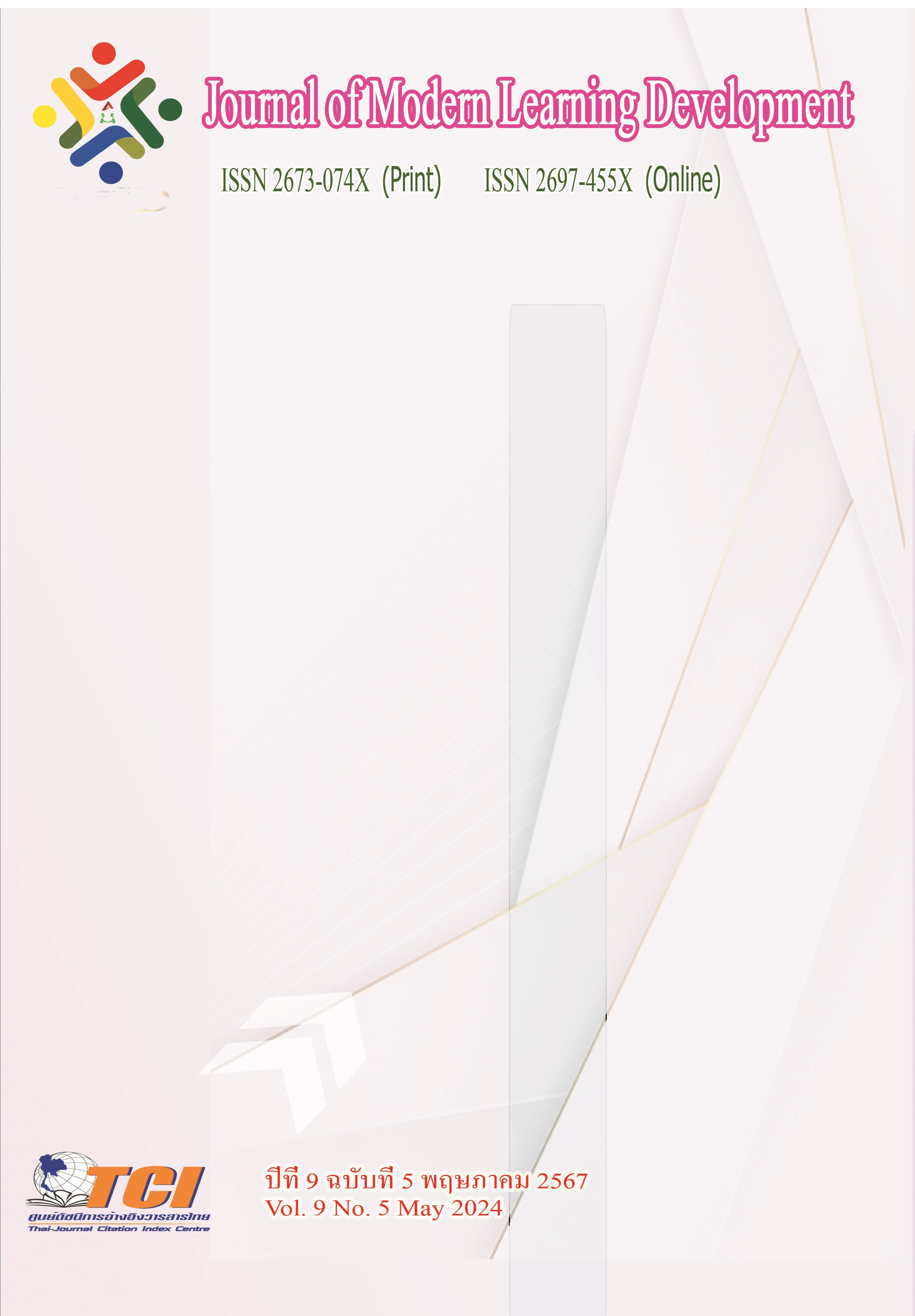Guidelines for green building criteria-based building improvement : A case study : The Collage of Local Administration KhonKaen University
Main Article Content
Abstract
According to the Announcement of Khon Kaen University No. 6/2014 on missions and policies in the administration and development of Khon Kaen University. (2015-2019) The Strategic Pillar of Khon Kaen University Strategies has been laid out in 4 pillars. Pillar 1: Green and Smart Campus is an organization that is managed wisely. That considers the environmental impact Pillar 2: Excellent Academy Excellence in the Arts Pillar 3: Culture and Care Community Be an organization that cares and takes care of the community. Including promoting arts and culture and Pillar 4: Creative Economy and Society is an organization that creates knowledge according to the mission of Creative economic and social development from the strategy of Khon Kaen University. Pillar 1 The organizers are interested in using the College of Local Administration building because Khon Kaen University has anticipated and prioritized the environmental impact. The University of Khon Kaen is a case study. Since the building was constructed after 2005, the electricity consumption has been 292,569 kWh/year, and the electricity usage index is 23.47 kWh/m2-y, which tends to increase energy consumption due to the building's electrical equipment, including air conditioning and lighting systems. There is a decline in work productivity. Therefore, the energy and environmental sustainability assessment criteria the Thai Green Building Institute (TGBI) established for buildings in use have been applied. Be utilized to determine the current assessment score and locate appropriate measures and economic values.
Assessment of Energy and Environmental Sustainability in Thailand (For In-Use Buildings) College of Local Administration, University of Khon Kaen Based on the preliminary evaluation of all eight topics, the score for the mandatory section on BM P1 Green Building Preparation (Mandatory) is below the standard (Certified 35-44 points) with a total score of 34 points. Analysis and simulation of the College of Local Administration's energy consumption Using the BEC V1.0.6 program, the OTTV value was 102.91 W/m2, which exceeded the BEC Group 1 ≤50 W/m2 standard for educational buildings. Building score according to green building criteria, model 2, improvement guidelines for the building framework Meet Building Energy Code, BEC requirements.
Guidelines and budget for green building criteria-based building improvement: The assessment criteria level has four distinct levels: Level 1 No expenditures, Level 2 Less investment, Level 3 Average investment, And the final level requires the most significant investment. Level 1 can be implemented immediately through the policy declaration, prepared to establish a team to monitor work and public relations in preparation for a green building. Initiating the collection of various assessment-relevant data to support the evaluation of green buildings following the Thai energy and environmental sustainability assessment criteria. (For occupied buildings) in measures with various investments at levels 2-4, which can be established as a long-term plan, a renovation project is scheduled for the following year. For higher evaluation score objectives.
Guidelines for improving the building frame in all six measures, namely 1. Measure the thickness of 75 mm. on the building wall to install thermal insulation. 2.Measure to change glass to Float glass, thickness 5 mm. 3. Measure to change glass to Low-E glass, thickness 12 mm. 4. Measure to install film on glass of existing buildings 5. Measure to install 75 mm. thickness insulation on building walls + install film 6. Measure to reduce glass wall area by 50% by changing to a solid wall. The measures that are most economically worthwhile and meet the Building Energy Code, BEC standards are Measure 6, reducing the glass wall area by 50% by replacing it with a solid wall, investing 818,963.64 baht with an OTTV value of 46.22 W/m2 can reduce electricity costs by 61,929.45 kWh/y or 230,996.84 baht/year with a payback period of 3.54 years.
Article Details
References
กรมพัฒนาพลังงานทดแทนและอนุรักษ์พลังงาน กระทรวงพลังงาน. (ม.ป.ป.) เทคโนโลยีการอนุรักษ์พลังงานในอาคารสำนักงาน (ในกรณีปรับปรุงอาคารเดิม). ออนไลน์. สืบค้นเมื่อ 17 กุมภาพันธ์ 2559. แหล่งที่มา: http://www.meaenergysavingbuilding.net/downloads/knowledge/tech nology_conservation_office.pdf
จิตรภณ ศัลยวิทย์. (2562). การประเมินความยั่งยืนทางพลังงานและสิ่งแวดล้อมไทย (สำหรับอาคาระหว่างใช้งาน). กรณีศึกษาอาคารโรงแรมดีพียูเพลส มหาวิทยาลัยธุรกิจบัณฑิตย์ กรุงเทพมหานคร.(วิทยานิพนธ์). กรุงเทพมหานคร: มหาวิทยาลัยธุรกิจบัณฑิตย์
ตะวัน จำปีเจริญสุข. (2563). การประเมินอาคารเขียวตามเกณฑ์ Leadership in Energy and Environmental Design (LEED) มหาวิทยาลัยธุรกิจบัณฑิตย์ กรุงเทพมหานคร. (วิทยานิพนธ์). กรุงเทพมหานคร: มหาวิทยาลัยธุรกิจบัณฑิตย์.
นเรศ ใหญ่วงศ์ และ จรัญ คนแรง. (2560). ศึกษาการประเมินประสิทธิภาพพลังงานของอาคารสถาบันการเรียนรู้ตลอดชีวิต มหาวิทยาลัยราชภัฏเชียงราย. (วิทยานิพนธ์). บัณฑิตวิทยาลัย: มหาวิทยาลัยราชภัฏเชียงราย


